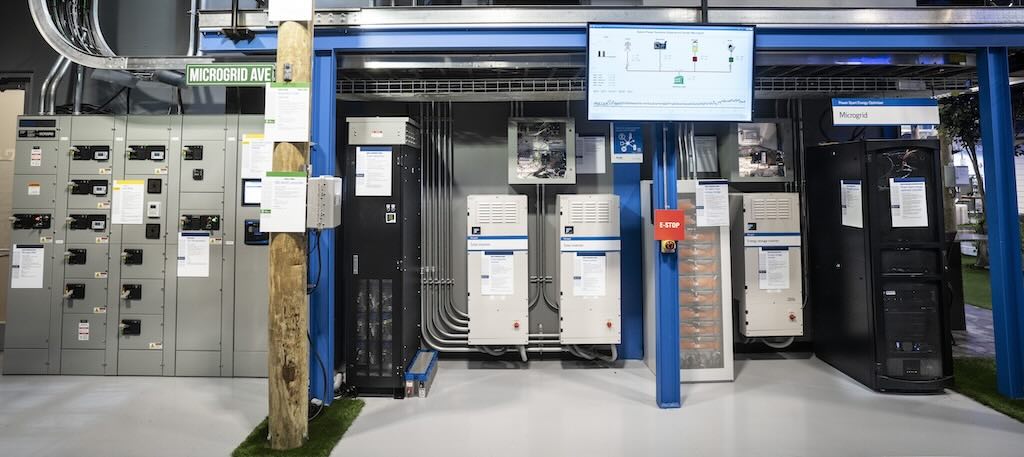The digital revolution, globalization, and market forces are upending the manufacturing industry, causing manufacturers to face unprecedented challenges

The digital revolution, globalization, and market forces are upending the manufacturing industry, causing manufacturers to face unprecedented challenges. Senior managers are wary of making long-term investments due to widespread economic uncertainty.
Plant managers have a hard time justifying system upgrades through increased productivity alone, while the infrastructure of plants and facilities is becoming outdated. Volatile energy prices and rising costs of maintaining legacy systems make profitability hard to predict, and these challenges are heightened against the backdrop of a skills shortage prompted by a wave of retirement of experienced managers.
Despite this sometimes uncertain market, manufacturing continues to be a driving force in the U.S., contributing $1.87 trillion to the economy in 2012. That’s nearly 12% of GDP. Coupled with this economic strength, a new era of manufacturing is emerging, known as the manufacturing renaissance. It places a renewed emphasis on developments in technology and improved operations to help manufacturers take advantage of unprecedented intelligence in their facilities to boost productivity and stay ahead of the market challenges.
Big Data and intelligent modernization in manufacturing top the list of emerging solutions to help plant operators address today’s industrial challenges by optimizing and modernizing their production environments. Industrial processes create more data than any other source, and the ability to transform this data into actionable insights through data analytics technology gives plant managers tangible, measurable steps to improve operations and productivity.
Intelligent modernization is the practice of establishing integrated, highly efficient manufacturing systems that use less energy, increase productivity, and reduce maintenance costs across the plant. Effective implementation of Big Data and intelligent modernization can revolutionize plant operations, business practices, and the industrial market as a whole.
Big Data
Big Data and data analytics technology help manufacturers extract actionable insights about their plant’s operations. Plant managers can pull data from their plant’s systems and run it against algorithms to compare a facility’s current operations to the optimal range for a system or piece of equipment.
This process allows plant managers to easily see when a system or piece of equipment deviates from optimal operating conditions. In addition to spotting deviations, the data can also be used to proactively optimize a building’s operations, from an entire plant down to a single terminal unit. Plant managers can leverage Big Data to reduce energy use. Schneider Electric encourages plant managers to use process analytics tools or manufacturing execution systems (MES) to create a model of how energy is used in their operations. Plant managers can build an energy profile or forecast model from their operations data, and can then use the profile to spot deviations. The MES can be configured to capture all process conditions that exist when the forecast model is violated. For example, plant managers can capture all the settings for a single piece of equipment, including the operator, temperatures, tank levels, and overall conditions that existed at the time of the energy overage. Then plant managers can take action based on a granular understanding of factors that lead to a violation of the optimal energy use forecast model.
Big Data allows plant operators or maintenance specialists to repair or replace a machine or component before it fails unexpectedly. This proactive, planned approach minimizes operational disruptions and equipment downtime, helps extend equipment lifetime, and improves overall operations.
For example, consider a commissioned facility such as a product shipping warehouse that might have dozens of identical motors, conveyors, and variable frequency drives. By gathering data about the characteristics of the machines, plant managers will know the characteristics a motor displays just before it fails, allowing them to effectively execute preventative or predictive maintenance.
Here are best practices for plant managers who wish to collect and analyze their plant’s data to drive optimal manufacturing and operating conditions.
Collection and analysis best practices to leverage Big Data for industrial processes:
- Integrated data collection: Plant managers should implement a dedicated and integrated data collection product, instead of disparate non-integrated, homegrown tools or commercial databases.
- Correlation with time: Data collection should be highly periodic and should include an efficient and effective time stamping functionality.
- "Selective storage" techniques: The selective storage approach takes up storage only when significant changes occur, while still providing a real-world depiction of operational conditions taking place. This ensures all the necessary information is collected without needing excessive data storage capabilities.
- Manage interpolations: If there are gaps in the data due to loss of a sensor signal, the system must be able to fill in the gaps. Additionally, if there are competing values, interpolation capabilities can calculate a weighted average.
- Multiple levels: Ensure the facility’s data is being analyzed at various levels, including enterprise, operations, and control, particularly when it comes to energy management.
Integration and modernization
Intelligent modernization is the approach Schneider Electric takes when consulting with customers on their modernization strategies. The approach focuses on creating efficiency through products and solutions that use less energy, increase productivity, reduce maintenance costs, and increase cost effectiveness.
Intelligent modernization focuses on offsetting capital investments through the resulting increases in efficiencies, and modernization upgrades focusing on energy efficiencies can often pay for themselves in energy cost savings. This approach supports the continuous push across the manufacturing sector, which, for example, in 2008 led two-thirds of all private-sector research and development in the U.S., driving more innovation than any other sector
Integration and modernization helps plant managers gain an integrated, multi-level perspective of a manufacturing facility. This visibility creates opportunities for organization-wide scalability, or what Schneider Electric describes as plant-to-plug capabilities. This scalability allows for consistent operations and data, from a single machine to the entire enterprises. For example, many manufacturing facilities are already collecting data from databases from existing PLCs and other sources. The ability of an integration system to pull data from manufacturing equipment from third-party systems and various vendors allows a plant manager to leverage integrated data analysis without needing to rip and replace existing systems.
Some data analytics technologies include managed software as a service (MSaaS) solutions—often referred to simply as managed services—to help optimize a facility’s operations. With managed services, external, third-party engineering analysts help aggregate and analyze diagnostic results, track progress, and consult with building stakeholders on more complex or challenging issues.
The managed services aspect of data analytics technology ensures that data is used to keep buildings operating at peak performance for optimal return on investment. For example, a member of the managed service team can help direct the maintenance team, helping them choose the best course of action on a daily basis to optimize operations.
The managed services team can provide building owners and managers with expert advice on priorities for the day, week, or month that will result in the biggest savings based on unique priorities such as cost or occupant comfort. Additionally, managed services can help reduce or eliminate the need for businesses to hire the talent and skills on their staff on a full-time basis, allowing internal teams to focus on their core work while benefitting from the expertise of building optimization expert business partners.
Driving value
Leveraging Big Data and intelligent modernization helps plant owners and managers understand not only how their facility is operating, but also why. The “why” emerges through a comprehensive view of collected data from various disparate sources and using intelligent modernization to analyze that data to drive actionable insights.
Through the application of algorithms and detailed diagnostic reports, plant managers can proactively identify operational problems that would not otherwise be detected. Big Data and intelligent modernization helps plant managers gain a deeper understanding of the “why,” which in turn leads to more permanent and effective solutions in their manufacturing facilities.
Mary Ramsey is senior vice president of U.S. Industry Business for Schneider Electric.



